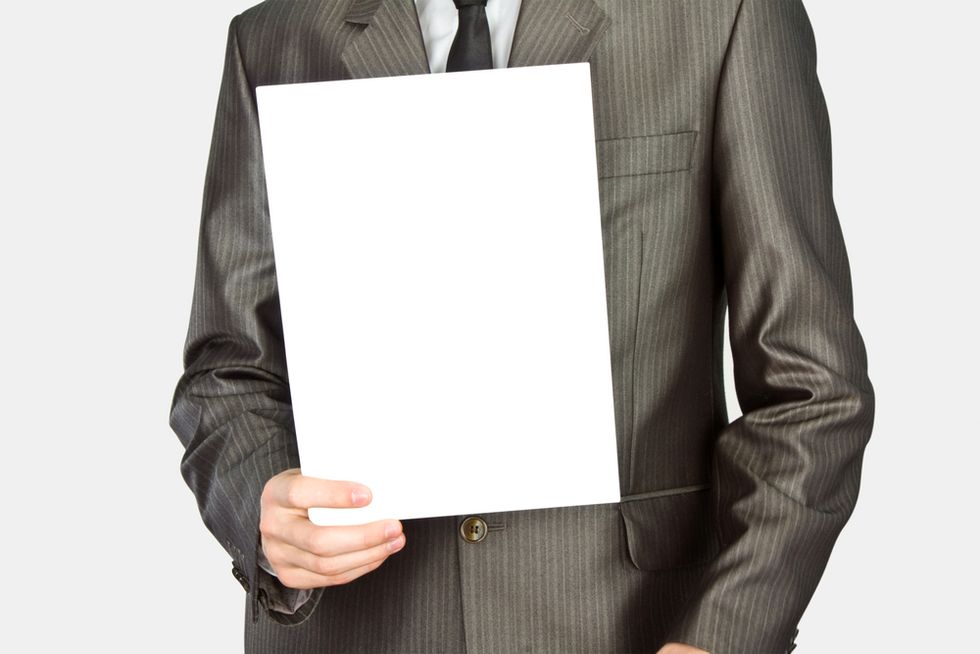
Writing cover letter after cover letter without any results can be a frustrating experience. Who has time for that? We know you have a busy life – and sometimes there’s just not enough time in the day to scan through articles to get the information you need. That’s why we created the Cover Letter Cheat Sheet! We pulled the best tips, tricks, and advice from our archives and put them all in one place just for you.
Cover Letter Cheat Sheet
Here are five solid cover letter tips from our experts:1. Think, "What Would The Best Candidate Do?"
A great trick is to start by thinking what the best candidate in the world would deliver. For example, for sales people, employers want to hear about setting sales records (overachieving quota), expanding the customer base, and earning customer loyalty. For project managers, employers want to see a consistent track record of delivering projects on time and with a high level of quality. For manufacturing, the key metrics are productivity, safety, quality and cost improvements. So, tell them in your first sentence you can deliver these things. I have over 15 years of experience leading manufacturing operations to new heights in productivity, profitability and safety.Setting new sales records, growing market share and turning mediocre performers into superstars briefly describes what I can do for your firm.I have over 10 years of experience leading highly visible, complex projects and have earned a solid reputation for meeting aggressive deadlines and bringing internal/external customer satisfaction to new heights. Get the idea? You just told them you can deliver exactly the results they are looking for. (Original Article: "4 Inside Secrets To Writing A Great Cover Letter")2. Use Bullet Points
Once you have the reader’s attention, follow with a few filler sentences and then move on to bullets points succinctly describing why they should hire you, what you have done and what you want to do in the future. These might read something like:- Team player, basketball, baseball, and especially soccer.
- Quick, agile thinker always willing to take on new tasks.
- Increased monthly ROI in my division by 20%.
- Developed 5 best selling iPad apps over the last year.
- Looking to learn server side maintenance while also bringing valuable new products to your company.
3. Pinpoint Challenges You Want To Address
You don’t have to talk about specific challenges in the introduction; this can be saved for later in the letter. But you can touch on goals that any company in the field might face and why you want to tackle them. Believe it or not, this can be accomplished in two brief sentences that read something like this: “Every restaurant faces its challenges in customer service, staff, budget management, and food execution. I am eager to take the reins with XYZ Restaurant and steer business in the right direction.” (Original Article: "4 Goals Your Cover Letter Introduction Should Accomplish")4. Tease Them
Foreshadow what will be listed on the resume; what they will discover when they read your resume–but don’t repeat. Piqué interest! Save some fresh content for your cover letter. This is a strategic career marketing plan, part of which what goes on your resume or cover letter is determined–a real choreography! Example:Please refer to my resume which summarizes more than 15 years of experience increasing revenue for top corporations such as IBM. I have aggressively launched unique sales strategies that have produced up to $8M annually. You will find a full account of my projected sales plans and exceeded goals by percentage per year.Now we have asked the hiring manager to review the resume and we have provided a bit of information to spark interest. It is important to add quantifiable information and be specific, as you don’t want to seem vague. However, there is no need to provide all the details in the cover letter, especially if it will be on the resume. While I urge you to tease – the teasing must be done with actual facts and specific references not generalities that mean nothing. (Original Article: "5 Cover Letter Techniques = Spellbound Hiring Managers")
5. Limit Sentences That Start With “I”
Focusing on the job and the employer’s requirements are key strategies for a great introduction. One of the best ways to do this is to refrain from using first person references at the beginning of your sentences. Why is this so important? Employers are hiring a solution to their business problems when they bring you on board, and this means focusing on their requirements is a key step. Think about it this way: when you create a verbal picture of what you can achieve, it rarely starts with “I”—and structuring your thoughts this way can help reinforce your emphasis on the company’s needs. The following example illustrate this point:Given your needs for a proven sales performer open to new challenges in the medical device industry, we should talk further about my record of success in territory expansion.In summary, don’t forget to create a strong cover letter as part of your job hunting strategy. You’ll find that a personal, yet powerful, introduction to your skills might be all you need to access more interviews. (Original Article: "5 Key Steps To A Cover Letter That Opens Doors")Photo Credit: Shutterstock

 Bigstock
Bigstock Bigstock
Bigstock Bigstock
Bigstock


